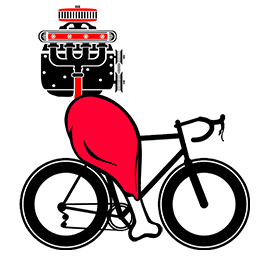Two recent studies attempt to compare critical power with FTP and evaluate their predictive benefits of steady-state abilities.
SUMMARY OF STUDY 1
In this study, a group of 17 trained cyclists and triathletes were tested to determine their critical power (CP) and functional threshold power (FTP). CP is the highest power output that can be sustained for a long duration using only aerobic metabolism. FTP is estimated as 95% of the average power achieved during a 20-minute time trial. The researchers wanted to see how closely CP and FTP agreed and if they could be used interchangeably.
The main findings were:
- There was a 92% chance CP was higher than FTP. CP averaged 7 watts higher than FTP, which exceeds the smallest meaningful change in power for endurance athletes.
- The range between CP and FTP for individuals was large (up to 33 watts). This means CP and FTP cannot be used interchangeably for planning training intensities or analyzing performance.
- CP correlated strongly with FTP (r = 0.969) showing they measure similar traits. However, the 6.1% unexplained variance and differences between CP and FTP are meaningful for endurance athletes seeking peak performance.
- CP incorporates the anaerobic work capacity (W’) which provides extra energy above the maximal aerobic power. FTP does not account for W’ which may lead to it underestimating sustainable power over longer durations.
- The CP model which uses multiple duration time trials to estimate CP and W’ is limited to predicting power outputs during events shorter than 20 minutes. For longer events, factors like glycogen depletion and fatigue reduce power below the CP model predictions.
In summary, while CP and FTP are closely related and aim to measure a similar threshold intensity, they differ in meaningful ways for competitive endurance athletes seeking the highest performance. CP provides a more comprehensive assessment of sustainable power that accounts for anaerobic energy sources. However, the CP model is limited to shorter-duration events. Endurance athletes should use the CP and W’ for planning and analyzing performance for events under 20 minutes. For longer events, they should rely on data from performance trials of a similar duration. Coaches and athletes need to be aware of the differences in CP and FTP to make the most informed decisions for training and racing.
STUDY OF SUMMARY TWO
The study aimed to compare Critical Power (CP) and Functional Threshold Power (FTP) in 15 highly trained cyclists and triathletes. CP was measured using the Jmodel – a linear model that calculates CP from the slope of multiple fixed-distance trials. FTP was measured with a 60-min cycling trial.
The main finding was that CP (282W) was significantly higher than FTP (266W). So the two measures cannot be used interchangeably, even in well-trained athletes. However, the limits of agreement between CP and FTP were small enough (range: +4 to -36W) that CP could potentially be estimated from FTP with a correction factor of 16W in this group.
The study confirms CP represents a higher intensity than FTP, though both are considered boundaries of steady state exercise. A 30-min difference in sustainable times and higher power at CP suggests the concept needs clarification. However, the sensitivity of both measures to small changes could be useful in tracking fitness. Limitations include equipment issues, small homogeneous group, and lack of evaluation of an alternative method to determine CP intensities.
In summary, this concise study found CP to be significantly higher than FTP in well-trained cyclists despite both purporting to represent the maximum steady-state exercise intensity. A small correction factor could allow estimation of one from the other, but the measures should not be assumed interchangeable. The study highlights a need to clarify the concept of a “maximal steady-state” given differences in power outputs and sustainable times. With clarification, both CP and FTP could prove useful for fitness monitoring and performance progression.
WHERE THE STUDIES AGREE
The two studies agree on the following main points:
- Critical Power (CP) and Functional Threshold Power (FTP) cannot be used interchangeably in highly trained cyclists and triathletes. CP was found to be significantly higher than FTP in both studies.
- The Jmodel method for determining CP was the most appropriate to compare to FTP. Both studies found the closest agreement and limits of agreement between the Jmodel CP and FTP.
- A correction factor could potentially be used to estimate one measure from the other in highly trained cohorts, but CP and FTP should not be considered equivalent. A correction factor of 16W was proposed in both studies.
- The concept of CP and FTP representing a maximal steady state needs further investigation given the higher power output found at CP. Both studies note this discrepancy.
- There are limitations to using CP for pacing and performance analysis given the wide limits of agreement for parameters like W’ (work done above CP). Both studies comment on this limitation.
- Possible issues with using the ramp test to determine CP trial intensities were noted. The alternative Dmax method was proposed as an option.
- Highly trained, homogeneous groups were used in both studies. So the results may not apply to recreational or heterogeneous cohorts.
ABSTRACT 1
Relationship Between the Critical Power Test and a 20-min Functional Threshold Power Test in Cycling
To investigate the agreement between critical power (CP) and functional threshold power (FTP), 17 trained cyclists and triathletes (mean ± SD: age 31 ± 9 years, body mass 80 ± 10 kg, maximal aerobic power 350 ± 56 W, peak oxygen consumption 51 ± 10 mL⋅min–1⋅kg–1) performed a maximal incremental ramp test, a single-visit CP test and a 20-min time trial (TT) test in randomized order on three different days. CP was determined using a time-trial (TT) protocol of three durations (12, 7, and 3 min) interspersed by 30 min passive rest. FTP was calculated as 95% of 20-min mean power achieved during the TT. Differences between means were examined using magnitude-based inferences and a paired-samples t-test. Effect sizes are reported as Cohen’s d. Agreement between CP and FTP was assessed using the 95% limits of agreement (LoA) method and Pearson correlation coefficient. There was a 91.7% probability that CP (256 ± 50 W) was higher than FTP (249 ± 44 W). Indeed, CP was significantly higher compared to FTP (P = 0.041) which was associated with a trivial effect size (d = 0.04). The mean bias between CP and FTP was 7 ± 13 W and LoA were −19 to 33 W. Even though strong correlations exist between CP and FTP (r = 0.969; P < 0.001), the chance of meaningful differences in terms of performance (1% smallest worthwhile change), were greater than 90%. With relatively large ranges for LoA between variables, these values generally should not be used interchangeably. Caution should consequently be exercised when choosing between FTP and CP for the purposes of performance analysis.
Frontiers in Physiology, 22 January 2021
Source: | https://doi.org/10.3389/fphys.2020.613151
Authors: Bettina Karsten1, Luca Petrigna, Andreas Klose, Antonino Bianco, Nathan Townsend and Christoph Triska
ABSTRACT 2
Do Critical and Functional Threshold Powers Equate in Highly-Trained Athletes?
The purpose of this investigation was to determine whether Critical Power (CP) and Functional Threshold Power (FTP) can be used interchangeably for a highly-trained group of cyclists and triathletes. CP was ascertained using multiple fixed load trials and FTP determined from a single cycling trial. Three different models for the determination of CP were initially addressed, one hyperbolic (Hmodel) and two linear (Jmodel and Imodel). The Jmodel was identified as most appropriate for a comparison with FTP. The Jmodel and FTP were not found to be interchangeable as ANOVA detected significant differences (282 ± 53 vs. 266 ± 55 W, p < 0.001) between these indices and the associated Bland-Altman 95% limits of agreement exceeded those set a priori. As the Jmodel was found to be consistently higher than FTP, a correction factor was posited to anticipate CP from FTP in this homogenous group of athletes using the mean bias (16 W). An alternate method for assessing CP trial intensities using Dmax as a proxy for ventilatory threshold is also proposed. The concept of both CP and FTP representing a maximal metabolic steady-state requires further investigation as the mechanical power at CP was significantly greater than at FTP.
International Journal of Exercise Science, 2021; 14(4): 45–59.
https://pubmed.ncbi.nlm.nih.gov/34055164/
Authors: EANNA MCGRATH, NICK MAHONY, NEIL FLEMING, CONOR RALEIGH, and BERNARD DONNE

Jordan Fowler has experience as a head swimming coach of the Frisco Swim Team, a TAAF-awarded coach, a track and field distance running consultant for select Texas High School runners, and has competed as a triathlete, road runner, and cyclist. Though he is remarkably slower than he was in his 20s and 30s, he still enjoys endurance sports and sports science studies.
